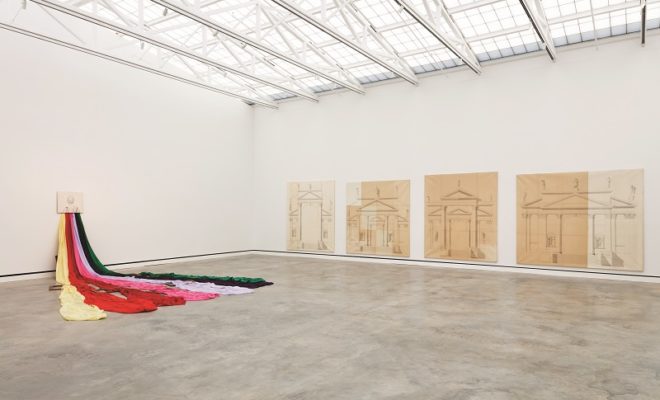 Courtesy Magazzino Italian Art. Photograph by Marco Anelli
Courtesy Magazzino Italian Art. Photograph by Marco Anelli
Design
Farm to tableau
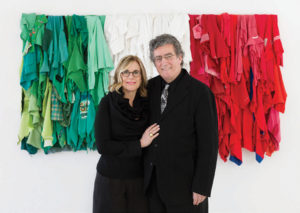
Nancy Olnick and Giorgio Spanu, the founders of Magazzino Italian Art. All images Marco Anelli Photos © 2017, Courtesy of Magazzino Italian Art
“ART IS LIFE.” THESE THREE WORDS WERE SPOKEN by the Italian artist Michelangelo Pistoletto the day he rolled a version of his newsprint-clad sculpture Sfera di giornali along the main street of Cold Spring, New York, last November. The original iteration of the Sfera—its title translates as Newspaper sphere—was trundled through the avenues of Turin in 1966 as a commentary on turbulent Italian events of the day. This appearance of the ambulatory artwork was staged in honor of Magazzino Italian Art, a new, self-funded art space established by collector-impresarios Nancy Olnick and her husband, Giorgio Spanu. “Magazzino” means “warehouse” in Italian, though to call this space just that does it discredit. “Art is life” is also a sentiment that Olnick, scion of a New York real estate fortune, repeats on several occasions throughout the tour she gives of the 20,000-square-foot light-filled venue. It is rare to have the founder act as a docent, but Olnick will tell you that she spends a lot of time here and relishes speaking about the art on view. For both her and the Sardinia-born Spanu, their discovery of Arte Povera was a life-altering experience.
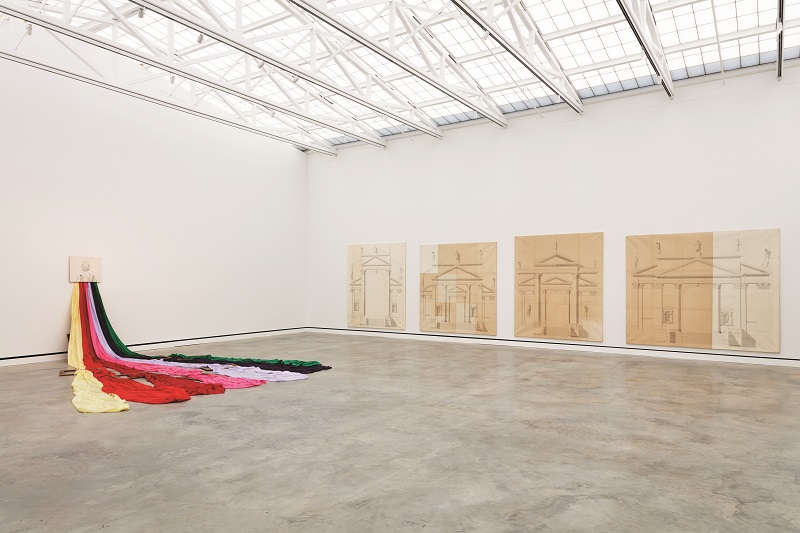
An installation view of Arte Povera: From the Olnick Spanu Collection: On the left is Giulio Paolini’s Amore e Psiche, and on the right, Luciano Gabro’s Ogni ordine è contemporaneo ad ogni altro ardine. Quattro modi di esaminare la facciata dell SS. Redentore a Venezia (Palladio), 1972-1973.
Arte Povera—or “impoverished art,” so named for the elementary, commonplace materials the artists used—was a highly influential avant-garde movement in the 1960s and 1970s, a period in Italy marked by political and social unrest in a country that was emerging from the dolce vita haze of the “economic miracle” of the 1950s and ’60s. The artists of Arte Povera, Olnick says, “explored the most pertinent existential questions in the most contemporary way.” “Art is life” was their raison d’etre; they strove to “eradicate the boundaries between media as well as between nature and art.”
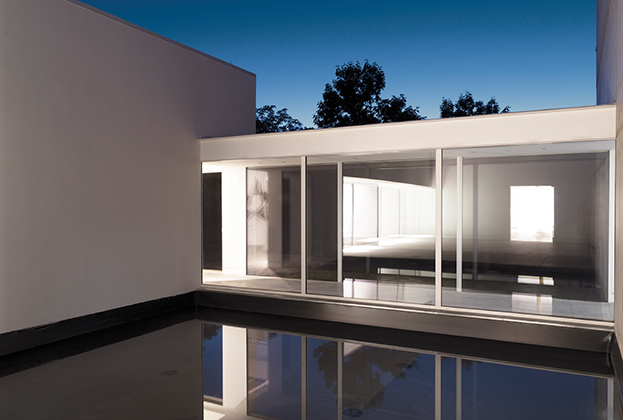
An exterior view of Magazzino Italian Art in
Cold Spring, New York.
In 1992, on a trip to Italy, Olnick and Spanu were advised to visit the Castello di Rivoli, a contemporary art museum in Turin; it was there that they encountered Arte Povera for the first time. Olnick says that she and Spanu—who have also amassed one of the most important collections of Murano glass in private hands—began collecting Arte Povera by “getting to know the artists and making human connections.” It becomes apparent quite quickly that this is personal for Olnick. She draws connections between the work and the artists featured, understanding both on a meaningful level.
The building that houses Magazzino Italian Art is artful itself. What began as a farm building was recently repurposed as a computer factory. The New York–based, Spanishborn architect Miguel Quismondo and his staff at MQ Architecture and Design transformed the structure by stripping away the dropped acoustic tile ceiling (under which they discovered the original beautiful concrete, which they maintained), putting down new floors, and constructing glass-lined corridors to a new administrative building. They created a space that is “silent but is very strong and present,” says Olnick. “The light is crucial to the building, and to the art, along with the open space.”
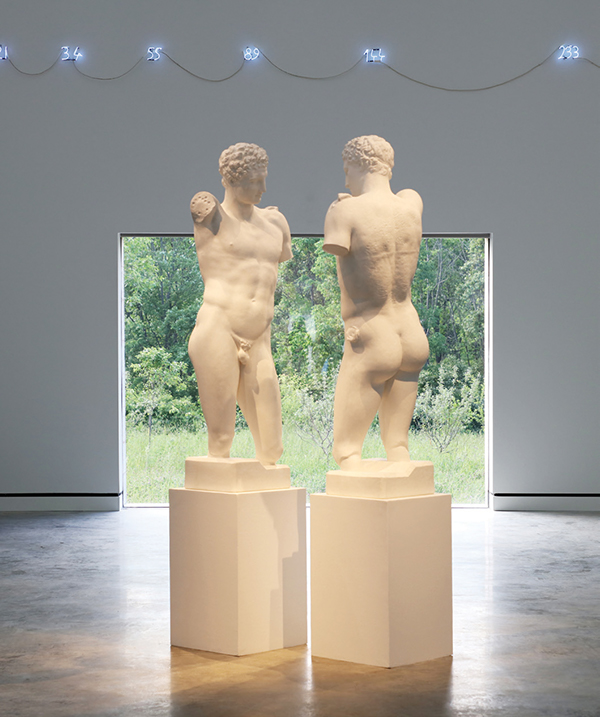
Mimesi (Mimesis) by Paolini, 1976–1988, made of plaster casts with wooden bases. Partially visible above is Mario Merz’s Untitled, 1982, which consists of a taxidermied reindeer head and neon Fibonacci numbers.
The inaugural Magazzino exhibition, Margherita Stein: Rebel with a Cause, was a celebration of another leading figure: the groundbreaking Italian art dealer Margherita Stein, who opened Christian Stein Gallery in Turin in 1966. (She named the space after her husband because she believed that a man’s name would earn the gallery more respect.) The business eventually relocated to Milan, and Stein became one of the most influential art dealers the country has ever produced. It was not an easy beginning; her admirers will tell you that Stein had to purchase all her artists’ work when no one else would support them. Although Olnick and Spanu never met Stein, some of the key works in their four hundred–plus collection were originally sold through her gallery. Today, they believe they are fulfilling her mission.
Magazzino Italian Art was ten years in the making but now that it’s open, Olnick and Spanu are just getting started. Olnick and Spanu will continue supporting young Italian and American artists, as they have in the past, by presenting their work alongside pieces from their own collection. At the same time, they are sponsoring artists’ exhibitions across New York and in Italy, as they recently did for the American artist Melissa McGill at the Venice Biennale. When art is life, there is always much more to do.












